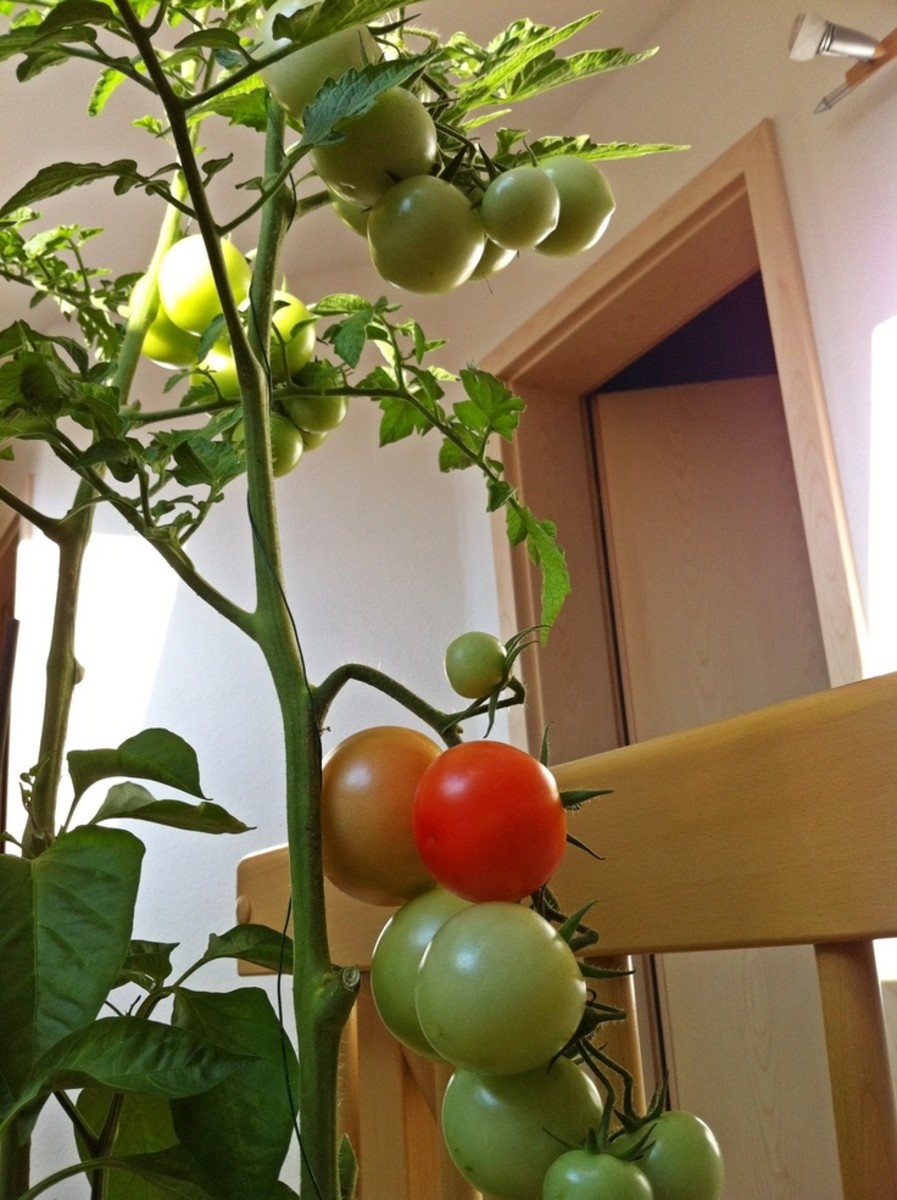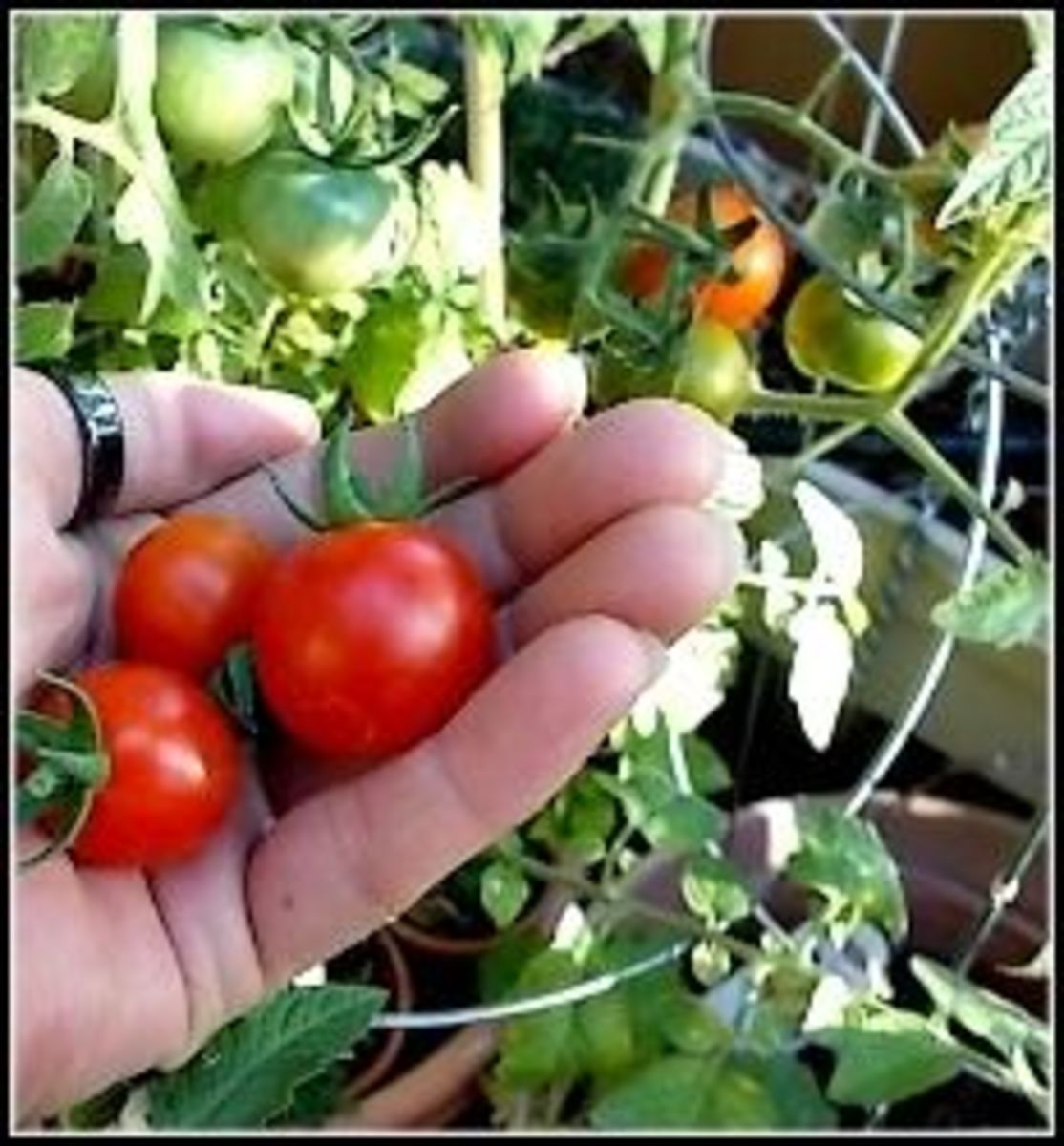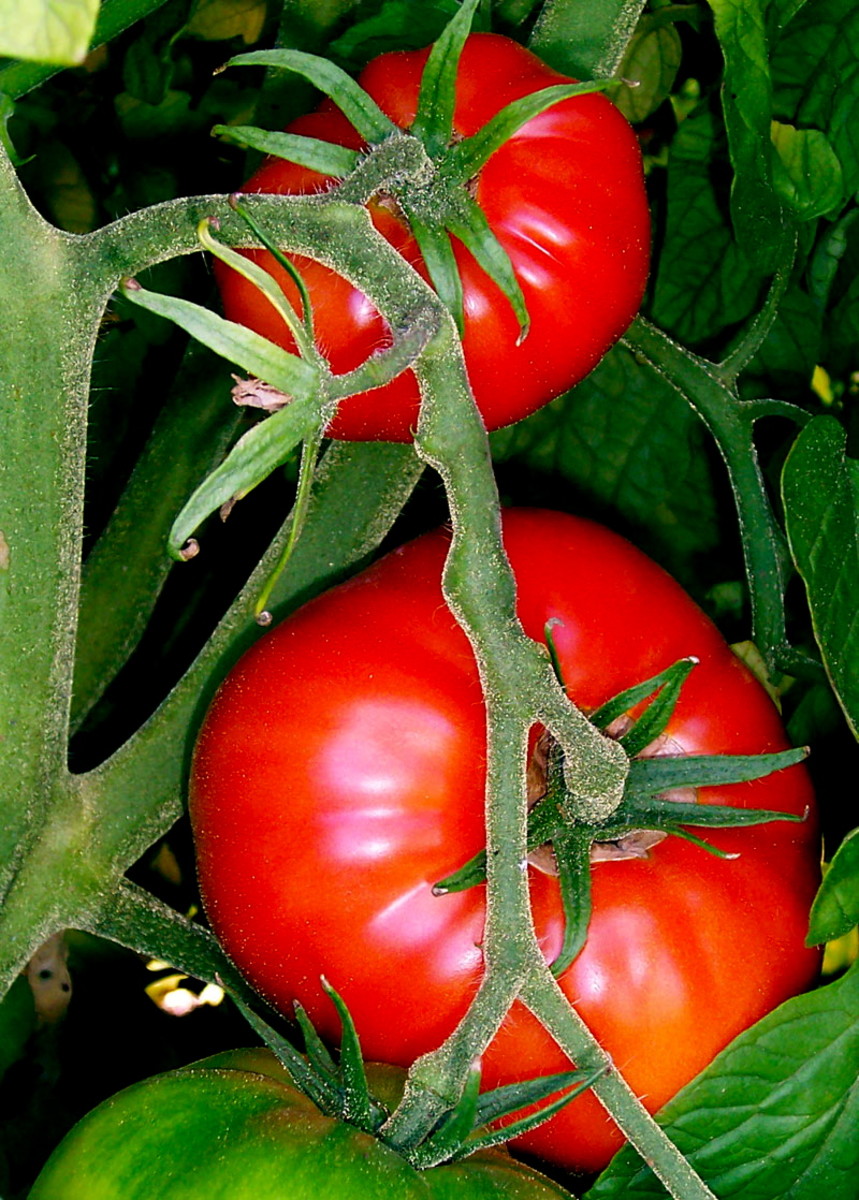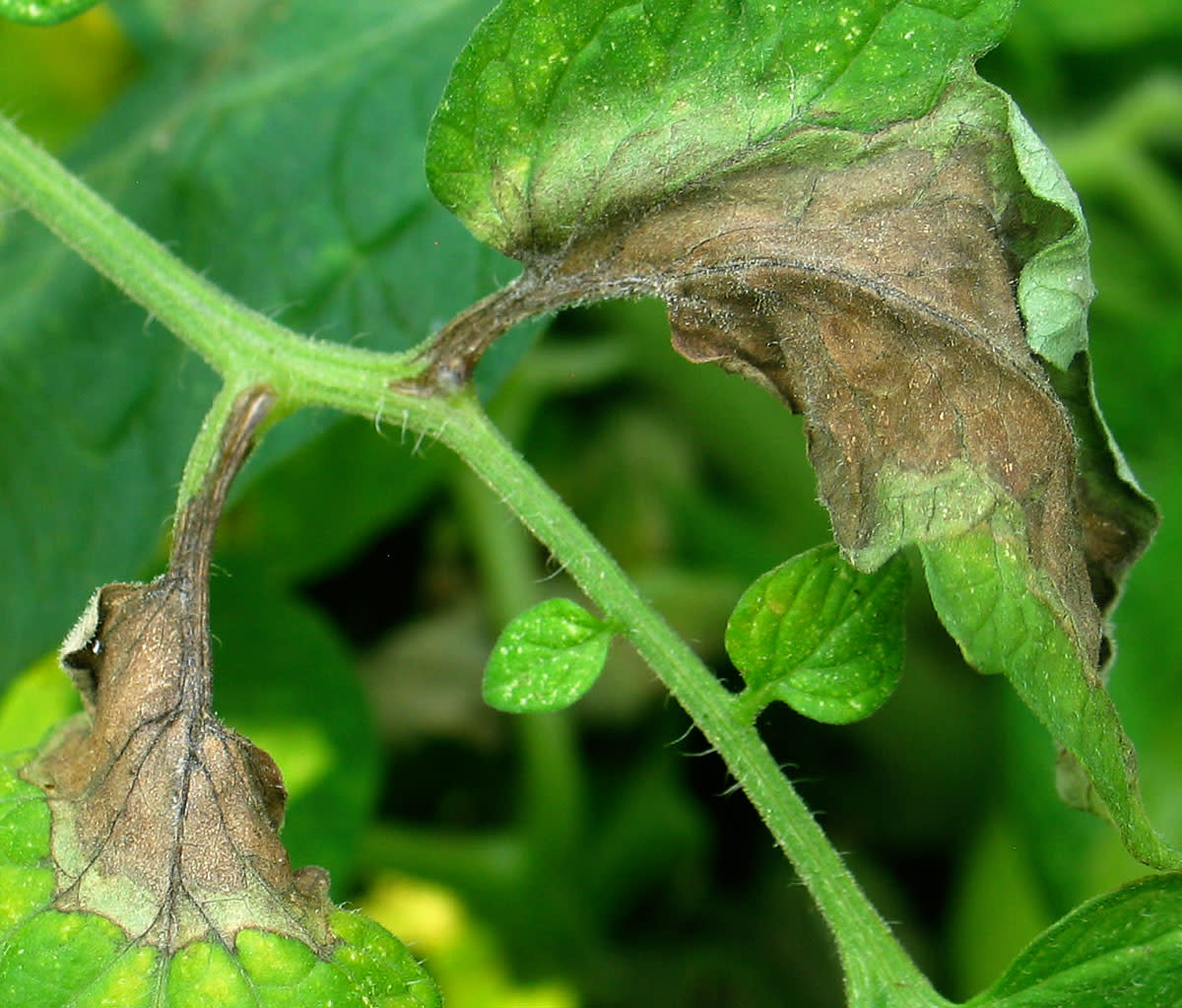- HubPages»
- Home and Garden»
- Gardening»
- Planting Vegetables
How to Grow Tomatoes on a Balcony

Balcony Tomatoes
Tomatoes are one of the most popular vegetables to grow in any type of garden. After you grow and consume a home grown tomato, it will be difficult for you to purchase tomatoes at the grocery store since they don't come anywhere close to the taste and texture of your own home grown product.
For many people today the idea of an in-ground garden is not feasible. For those living in an apartment, condominium, or a townhouse, there is no place to put a garden. In most cases the only real outdoor space available is the balcony. Often apartment dwellers will try to add a touch of a garden by adding something like a hanging bird bath, but why not a bit of a garden as well? So what does it take to grow tomatoes on a balcony?
Self Watering Planters
First, be sure you will get adequate sunlight. Tomatoes like to get at least six hours a day of direct sunlight and prefer eight hours. A great way to start growing balcony tomatoes is to simply use a planter resting on the floor of your balcony. With a container on the ground, you can grow a large variety of tomatoes. The biggest problem with growing tomatoes in a container or planter on the ground is the need to stake or otherwise support the tomato plants as they grow and eventually have the fruit hanging on them. You cannot get away with staking them in a container so consider some type of trellis or guide.
This can be mitigated by selecting determinate tomato varieties. Some very small tomatoes include Patio, which need very little support. Another favorite is Celebrity tomatoes, which will grow to a larger size, but because it is a determinate variety will be limited in its growth, and the tomatoes will tend to mature over a shorter period of time.
The Bush Goliath variety is ideal for planter grown tomatoes and we have one growing in an Earthbox this season. As with any container grown plants, you have to monitor watering and be diligent in this process.
The EarthBox is a self watering planter, which solves one of the big problems with container grown vegetables. These planters have a water reservoir in the bottom, so watering can be done at much less frequent intervals. They are not actually "self-watering" but have a reserve so you don't have to water every day. This is very handy if you travel or just cannot pay attention to your balcony garden each and every day.
Another advantage of the Earthbox is that you can buy a staking system that sits over the planter and allows you to grow larger types of plants, without the fear that the wind will blow the planter over.
The Earthbox will provide adequate drainage so if you use pots, make sure they have a drainage hole to keep moisture levels even.
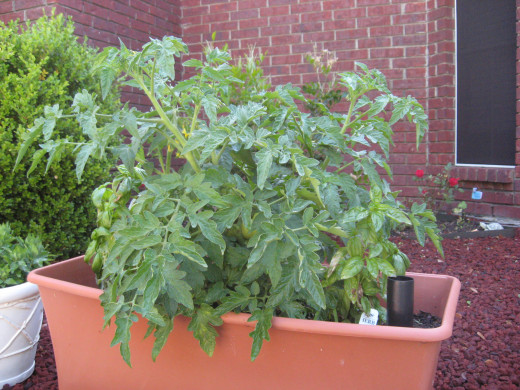
Hanging Tomato Planters
If you still want to grow some of the indeterminate types of tomatoes like cherry tomatoes, another alternative is to use a hanging basket or planter of some sort.
The most famous and probably the most productive of these planters is the Topsy Turvy planter. One big advantage to growing upside down plants is the fact that the vines don't have to hang over the edge of the planter and so aren't as likely to be damaged at that point.
You can grow some of the larger varieties that would be sprawling all over if they were on the ground, and if they get too large simply prune them back.
These can go several days without watering, but you can make that stretch a little more if you add some of the water retention crystals to the soil when preparing the planters.
The big drawback to these is that a hanging tomato planter filled with soil and water can weigh a lot, and finding a suitable place to hang one can be difficult. But the tomatoes love growing this way, and the fruit is clean and more disease free because it doesn't lay on the soil. We have also found that the birds have nothing to grip on so they don't bother (ruin!) the tomatoes as they ripen.
Finally, these will usually only support one plant at a time. While that's plenty for many folks, some people like to plant more than one variety in order to stretch out the season for harvesting the fruits of your labors.
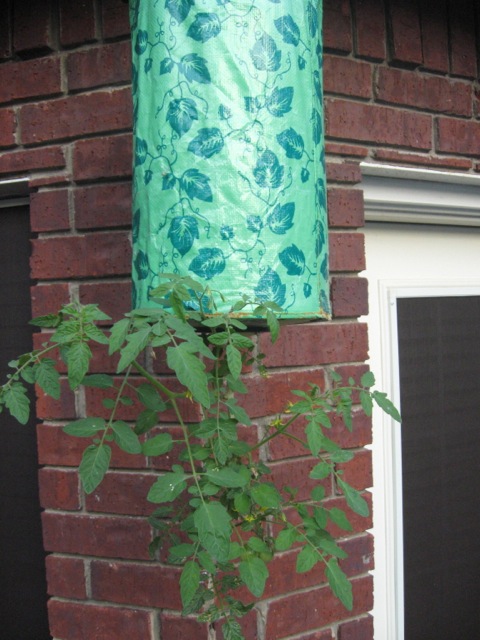
Self Supporting Planters
As we said, the hanging planters are the most flexible in terms of the types of tomatoes that can be grown. They can handle the indeterminate varieties easily, and produce some of the cleanest fruit because there is no contact with the soil. They will retain water easily, but the big drawback is the need to find someplace that will handle the weight of the planter, especially as the plant continues to grow and you ensure that you keep it watered well.
The middle ground between the planters on the ground and the hanging tomato planters are the self supporting hanging planters. There are a couple of popular choices for these.
The same people that brought out the Upside Down Tomato planter (Felknor Ventures) have introduced the Tomato Tree. This has up to 3 tomato plants (or other plants like peppers) that hang out of holes in the side of the planter bag in a fashion similar to the hanging planter. But it has its own stand, so that you don't have to worry about finding a structure to hang the planter from.
Another planter is the Upside Down Tomato Garden. This comes with a stand and room to plant up to 4 tomatoes or peppers, etc. in the planter. As an added bonus, you can use the top of the planter as well, and add flowers or herbs in that space as well. So, in effect, in a small footprint you can create a miniature garden.
Hopefully these ideas can get you started on growing your own tomatoes on your balcony or patio.
This content is accurate and true to the best of the author’s knowledge and is not meant to substitute for formal and individualized advice from a qualified professional.
© 2008 Joanie Ruppel

